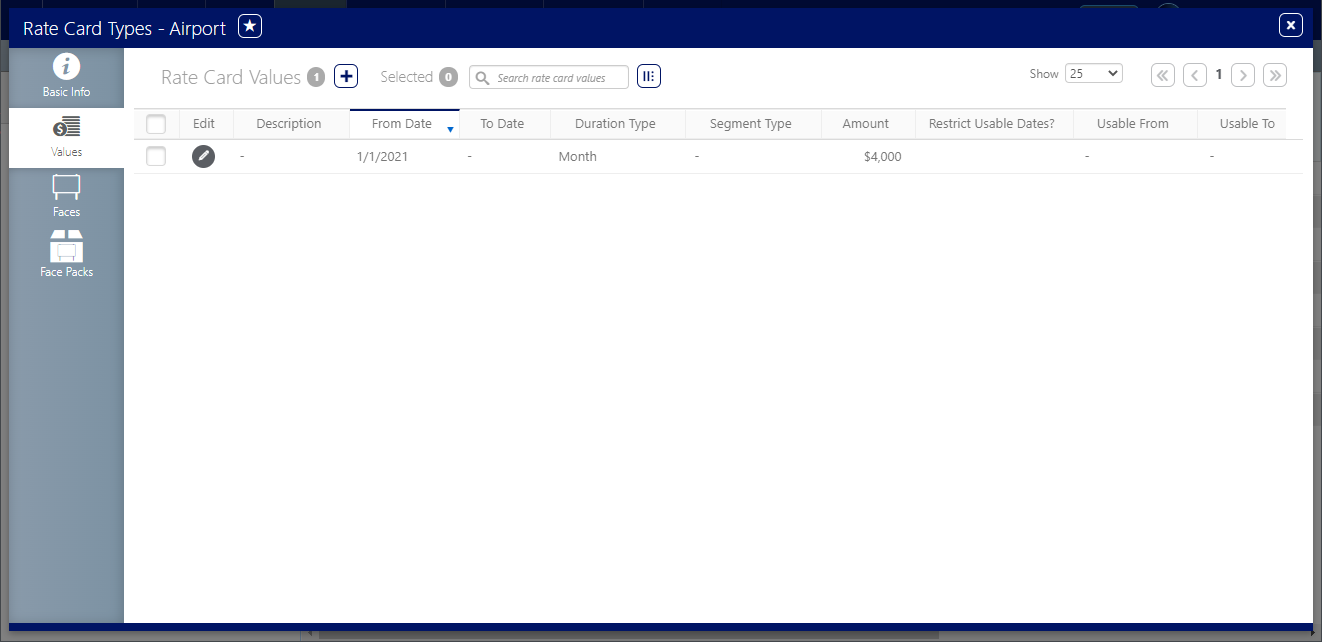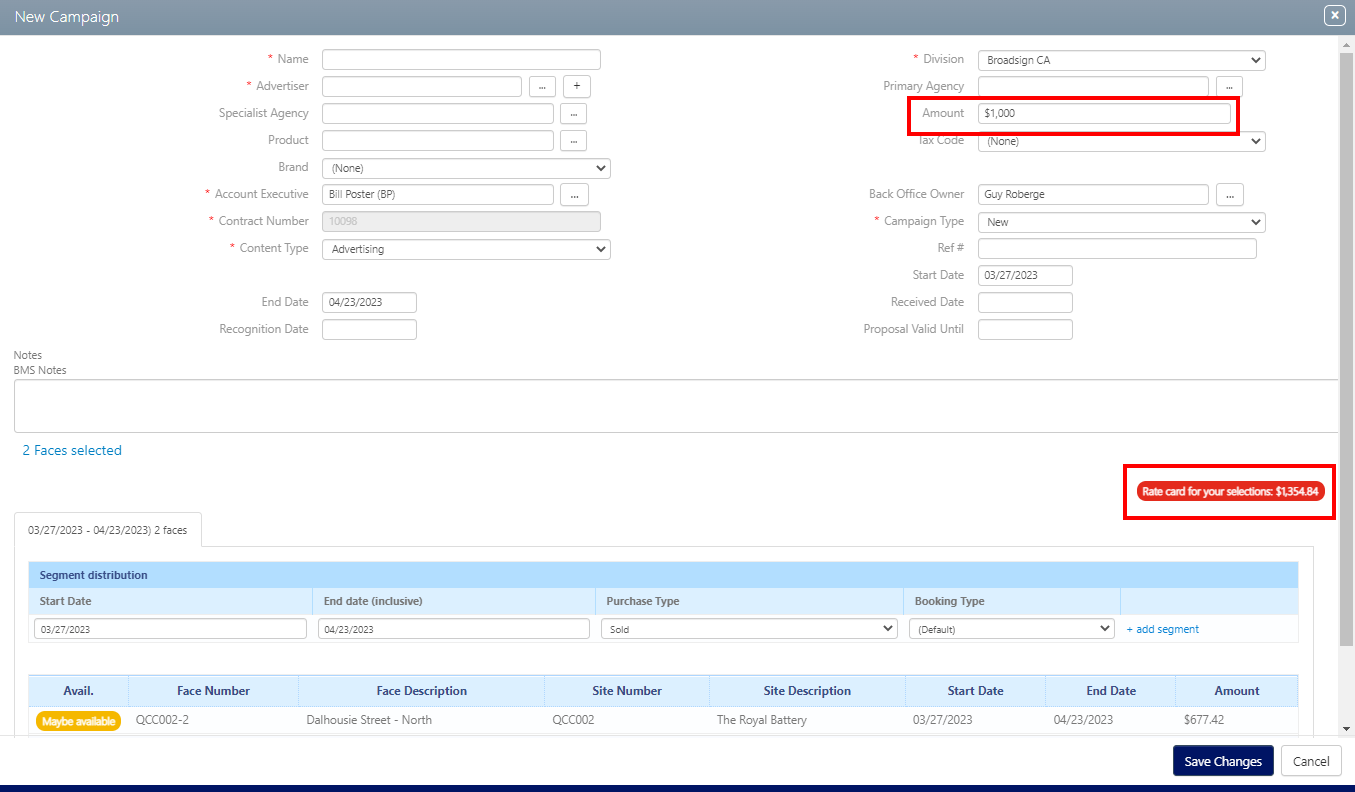A rate card is where face prices are set. The rate card is what is used to determine the value of the faces for the time sold.
Rate Cards must be unique. The Static Campaigns module prevents users from creating rate cards that have the same characteristics. This safety feature prevents the accidental creation of rate cards by different team members and the miscommunication that might result.
Broadly there are two rate cards: National![]() National ads book in weeks. See also Local. and Local
National ads book in weeks. See also Local. and Local![]() Local ads typically book in months. See also National.. Each item of inventory has a price based upon its value to advertisers, but as the campaign is built and modified discounts of various kinds alter the effective prices.
Local ads typically book in months. See also National.. Each item of inventory has a price based upon its value to advertisers, but as the campaign is built and modified discounts of various kinds alter the effective prices.
Rate Card Types
Static Campaigns
There are two rate card types:
| Type | Description |
|---|---|
| Flat Rate Cards | Flat rates are constant prices. These will be used in most cases. |
| Additional Revenue Rate Cards | Rates for other costs such as content creation, production, installation, fines and fees. This rate card exists in parallel to the flat rate cards. |
This table shows how rate cards have been configured for national and local campaigns, and for holiday as well as regular periods.
The result? It automatically calculates the amount.
Rate Card Duration
Static Campaigns
The Duration Type indicates how the rate card's prices apply.
| Price | Description |
|---|---|
| Single | Fixed price for the booked period. |
| Fixed Month | Days of booked period are pro-rated to each month, which has a fixed day count of thirty days. |
| Week | Days of the booked period are pro-rated per week. |
| Four Weeks | Days of the booked period are pro-rated to four weeks. |
| Month | Days of the booked period are pro-rated to the exact number of days in the calendar month. |
| Two Weeks | Days of the booked period are pro rated to two weeks. |
In this example, the sales user tried to enter $1,000 as the campaign total. However, the Rate card for your selections: $1,354.84 message appears in highlighted text. Because the entered amount is less than the amount calculated by the rate card, manager approval will be needed to proceed with this lower price.
For more information, see Below Rate Card Prices.
In essence, only one primary rate card, along with the additional revenue rate card, can be applied at once. This means that while all active rate cards linked to a face can potentially be utilized if it's available for sale, only one will be applied to any given proposal.
For instance, let's say two rate cards are available: one for national campaigns and another for local campaigns. Both might be applicable to a particular face or face pack. However, only one of these will be selected for the actual campaign.
The additional revenue rate card functions in conjunction with the primary rate card. This card encompasses additional costs such as fines, fees, and business charges. Sometimes, these extra costs can be specific to a particular face; for example, a roadside billboard might necessitate two workers and a ladder truck for installation. Since rate cards are linked to faces, the additional revenue rate card will automatically factor in these installation fees.
The system calculates prices based on when rate cards are active. To use the example above: there are two rate cards, one for the regular season and one for the holidays. If a campaign spans both periods, the Static Campaigns module automatically switches between rate cards and includes the correct prices using the different rate cards on the days when they are in effect.
Typically, advertising buyers will pay less than the price included in the rate card as they negotiate for discounts and the sales team offers incentives.




